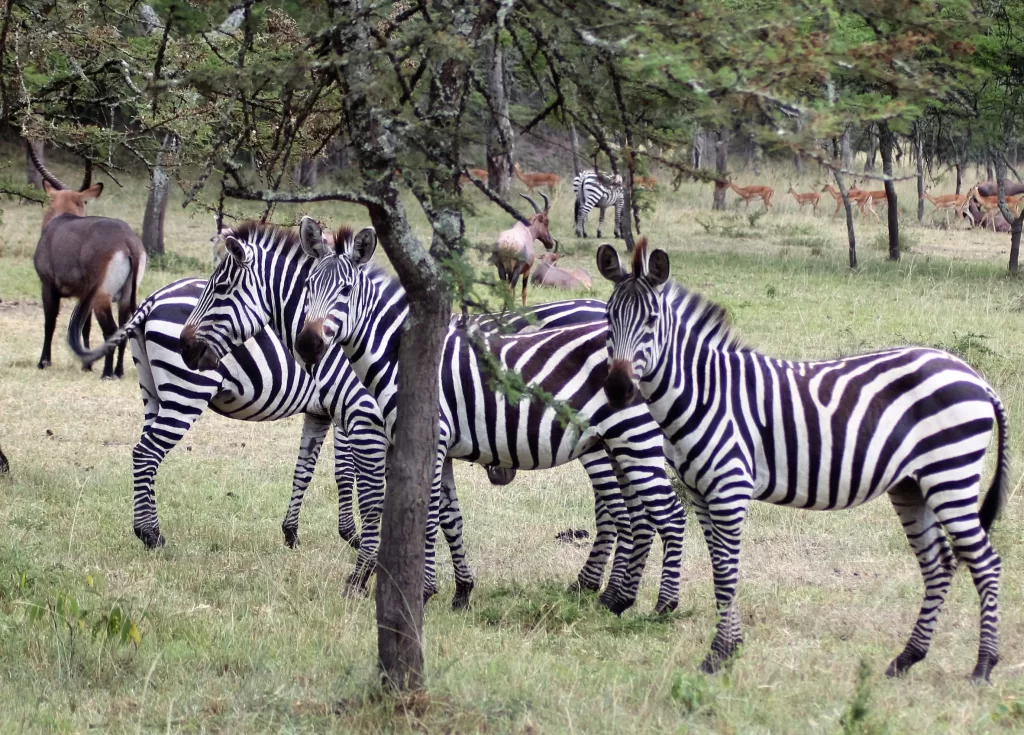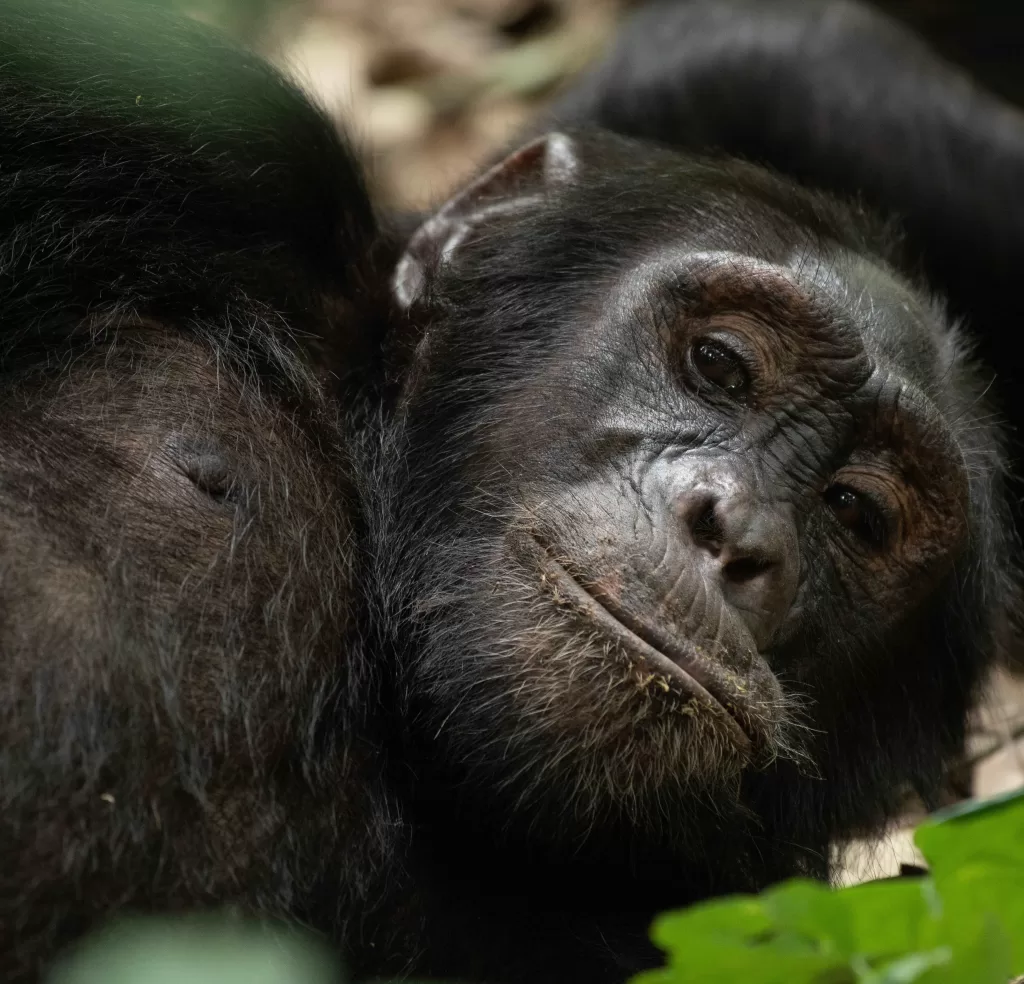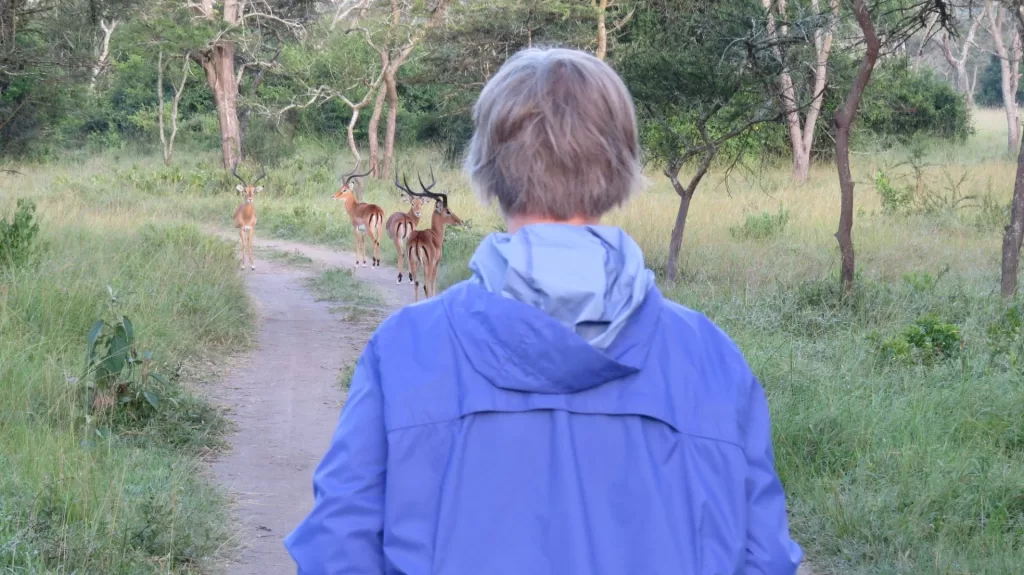Walking Safaris in Uganda
Walking safaris in Uganda is done in most of the national parks and reserves. They offer travelers chances to get in-depth experiences about the flora and fauna of the various destinations. East Africa offers some of the most diverse and abundant wildlife on the planet making it a great place for a walking safari.
Walking Safaris in Uganda provide a captivating opportunity to explore the country’s rich biodiversity firsthand. Whether you are traversing the dense jungles of Bwindi Impenetrable National Park, the sweeping plains of Queen Elizabeth National Park, or the picturesque landscapes of Murchison Falls National Park, each step unveils a new facet of Uganda’s natural wonders.
Guided by experienced rangers and naturalists, walkers are led on immersive journeys through the heart of the wilderness, offering unparalleled insights into the flora and fauna that call these habitats home. From the melodious chirping of birds to the rustling of leaves, as wildlife moves through the underbrush, every sound resonates with the rhythm of the African bush.
While walking safaris offer a chance to witness iconic species such as elephants, buffalo, and antelopes in their natural habitat, they also provide opportunities for encounters with smaller, often overlooked creatures. From colorful birds, butterflies, and exotic insects to elusive reptiles and amphibians, every sighting adds to the richness of the experience.
Walking safaris can be challenging and demanding so they are not for everyone. You will need to be in good shape to take part and also be aware of the risks of walking in the African bush, such as the risk of encountering dangerous animals or getting lost if unguided.
However, for those willing to embrace the adventure, walking safaris offer a truly immersive and unforgettable way to connect with Uganda’s wilderness like never before.

What are the best national parks and reserves for a walking safari in Uganda?
Uganda is blessed with various national parks and reserves that offer excellent opportunities for walking safaris. Some of the best parks and reserves for walking safaris in Uganda include:
Bwindi Impenetrable National Park
Famous for its mountain gorillas, Bwindi also offers fantastic walking opportunities. Guided forest walks allow visitors to explore the lush jungle habitat, encounter various primate species, and immerse themselves in the park’s incredible biodiversity.
Queen Elizabeth National Park
This diverse park is home to savannas, wetlands, and forests, making it an ideal destination for walking safaris. Walking excursions offer the chance to see various wildlife, including elephants, buffalo, antelopes, and even tree-climbing lions.
Murchison Falls National Park
Known for its dramatic waterfalls and abundant wildlife, Murchison Falls offers walking safaris along the Nile Delta and through the park’s diverse landscapes. Visitors can spot elephants, giraffes, hippos, and numerous bird species while exploring on foot.
Kibale National Park
Renowned for its chimpanzee tracking experiences, Kibale also offers guided nature walks that provide insights into the park’s tropical rainforest ecosystem. Walking safaris here offer opportunities to see other primates and colorful birds and butterflies.

This remote and less-visited park is a haven for birdwatchers and nature enthusiasts. Guided forest walks lead visitors through pristine lowland rainforest, where they can spot rare bird species, monkeys, and even forest elephants.
Lake Mburo National Park
With its diverse landscapes of savanna, woodland, and wetland, Lake Mburo is perfect for walking safaris. Guided walks offer the chance to see zebras, impalas, elands, and other wildlife up close while exploring the park’s scenic trails.
Lake Bunyonyi
The lake does offer fantastic opportunities for scenic walks and cultural experiences. Along the shores of Lake Bunyonyi, visitors can embark on strolls through lush greenery, enjoying breathtaking views of the tranquil lake and surrounding terraced hills.
Kidepo Valley National Park
Renowned for its rugged landscapes, stunning scenery, and abundant wildlife, Kidepo Valley is a paradise for nature lovers and adventurers alike. Guided walking safaris in Kidepo Valley National Park provide visitors with the opportunity to explore the park’s diverse ecosystems on foot, immersing themselves in the sights, sounds, and scents of the African bush.
What are the benefits of walking safaris?
Meet local people
Walking safaris are great for meeting local people and learning about their culture, traditions, and their way of life. Most of the community-based tours or cultural tours are by the local community. By visiting the locals, you are helping improve their livelihood.
Experience the African bush in depth.
With walking safaris, you get to experience the African bush more intimately. Wellness Safaris in Uganda and connect to nature. You will be able to experience the sights and sounds of the wilderness. You will also be able to explore the surroundings and learn more about the flora and fauna in the bush.
Get up close to the wildlife.
Walking safaris allow you to get up close to the wildlife in a way that is not possible on a game drive. A safari on foot is a great way to see the animals in their natural habitat and learn more about their behavior.
Maintain a healthy lifestyle.e
Safaris on foot are a great way to fit in that workout when on an African Adventure. Walking safaris are a great way to get a workout. You will be walking for several hours each day, and you will be carrying your backpack. This is a great way to stay in shape and enjoy the great outdoors.
Walking safaris are a great way to experience the beauty and wildlife of Uganda. They are also a great way to get exercise and learn about the local culture.

What you should carry on a walking safari in Uganda.
Backpack
A backpack to carry all your gear is a must-have. Be sure to choose a backpack that is comfortable to wear and that is large enough to fit all your belongings.
Water
Water is Life, so carry plenty of water with you on your walking safari to stay hydrated. The amount of water you need depends on the length of your hike and the weather conditions during your walk.
Snacks
At times the hikes are challenging and you need to keep your energy levels high and prevent hunger from striking. Carry some healthy snacks like energy bars, granola bars, trail mix, fruits, nuts, and some crackers with you on your walking safari.
First-aid kit
A first-aid kit is always a good idea to have on hand, in case. Be sure to include bandages, antibiotic ointment, pain relievers, sanitizers, hand wipes, and other items in case of an injury.
Clothing
Safaris on foot are best done in comfort. You need to wear comfortable, loose-fitting clothing made of breathable fabrics. Long pants and long-sleeved shirts are recommended to protect you from stinging plants, insects, and the sun. You may also want to bring a hat and sunglasses.
Footwear
Sturdy shoes or boots that provide good support and traction are a good idea. Avoid wearing sandals or flip-flops as they get damaged and offer little protection from undergrowth like crawling roots and climbers. They are also not comfortable in case it rains and the trails get slippery.
Sunscreen
Sunscreen is essential for protecting your skin from the sun’s harmful rays. Be sure to apply sunscreen often during your safari on foot. For a walking safari, you will need sunscreen with an SPF of at least 30 or Broad-spectrum protection.
Insect repellent
The purpose of insect repellent on walking safaris is to protect you from insect bites. Insect bites can be itchy, uncomfortable, and even dangerous. Some insects, such as mosquitoes, can carry diseases such as malaria and yellow fever.
Other insects, such as ticks, can carry Lyme disease. Be sure to choose an insect repellent that contains DEET, as it’s the most effective, or another effective insect repellent.
Camera
What better way to capture memories than with a camera on your walking safari? Be sure to bring a camera that is durable and waterproof, as you may be walking through wet or muddy areas.
Binoculars
Binoculars are a great way to spot wildlife that you might not be able to see with the naked eye and are great in places that have a lot of vegetation cover. They also help get a closer look at animals. This can be a great way to learn more about their behavior and appearance.
What is the best time to have a walking safari in Uganda?
The best time to go on a safari on foot is during the dry season, which is from December to March and June to September. During these months, the weather is generally sunny and warm, with little rain. This makes it easier to spot wildlife and enjoy the scenery.
Walking safaris are a great way to experience the beauty and wildlife of Uganda. They are also a great way to get exercise and learn about the local culture.
Are you looking for an unforgettable safari experience? I recommend a walking and wildlife safari in Uganda.
For more information on walking safari special offers, contact us at info@travelerslinkafrica.com